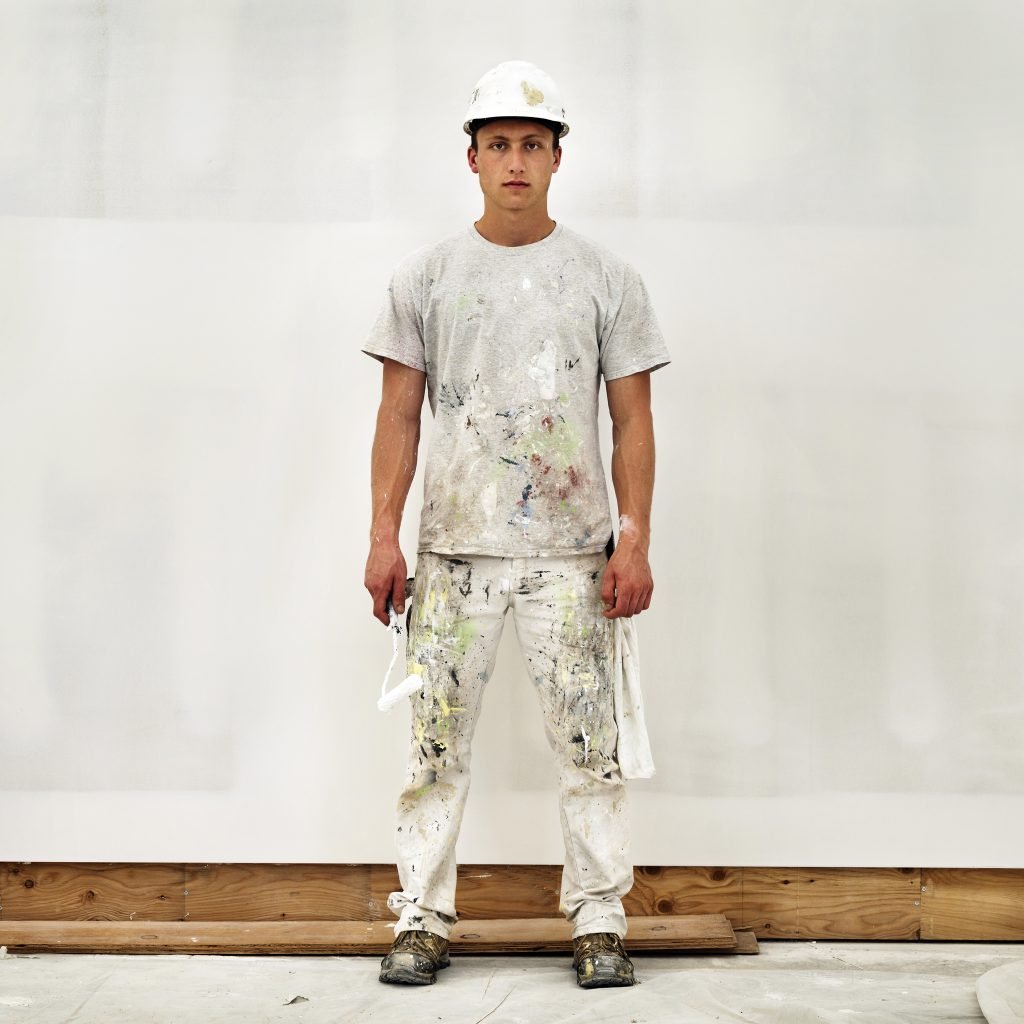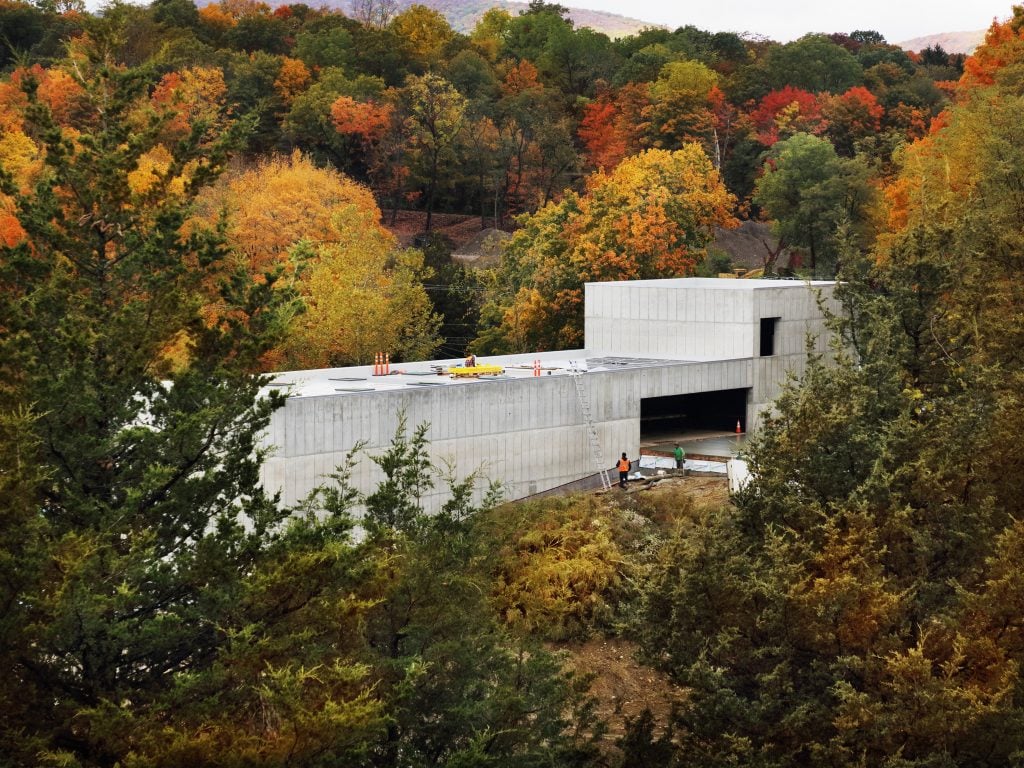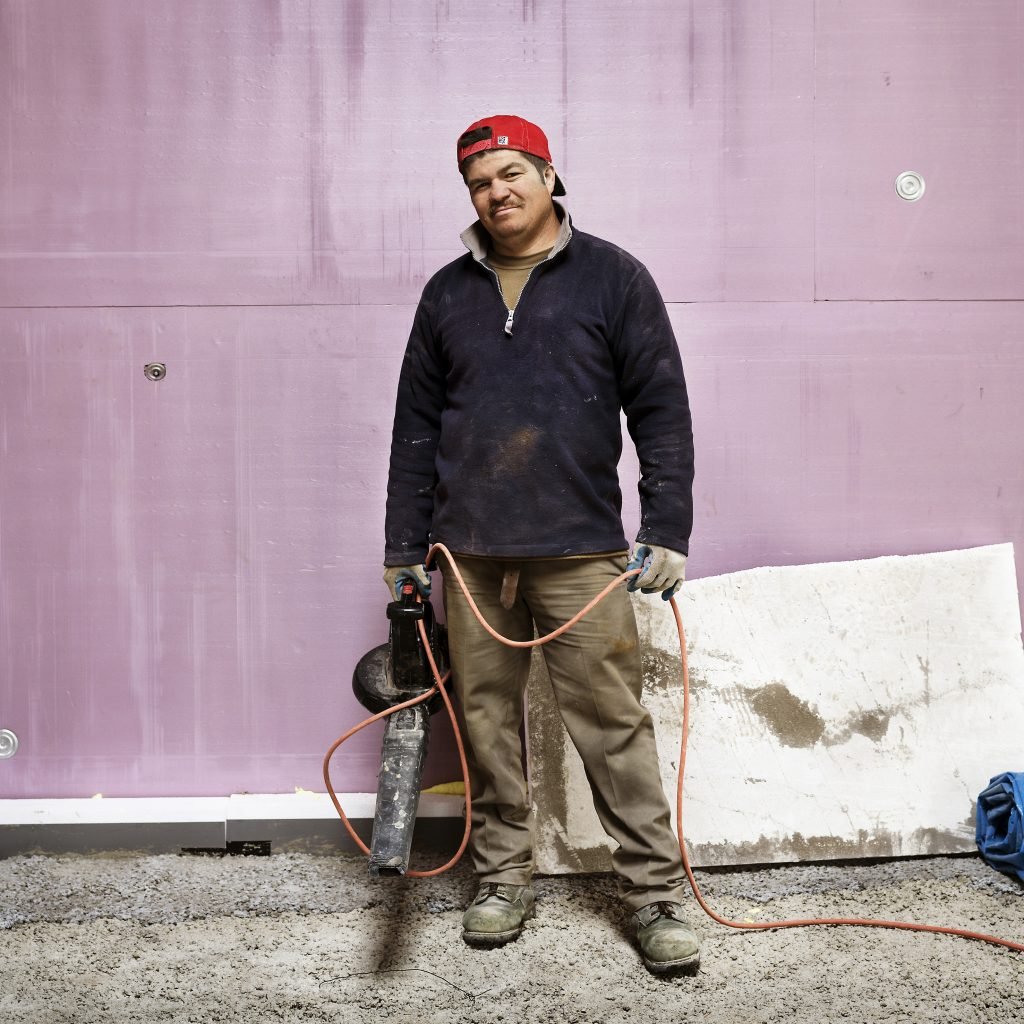Art & Exhibitions
At Magazzino, an Artist’s Lens Is Focused on the Workers Who Built the Italian Art Museum
Marco Anelli's 50 large-scale color photographs chronicle how the institution came to life.

What does it take to build a museum? Whose labor and livelihood bring these high-minded visions to life?
Right now, Magazzino Italian Art is giving visitors a behind-the-scenes look at the process—and people—who made this post-war and contemporary Italian art institution a reality.
Curated by Paola Mura, “Building Magazzino 2014–2024” presents 50 large-scale photographs by Italian-born, New York-based photographer Marco Anelli (on view through through October 28). The museum commissioned Anelli to chronicle the museum’s transformation from a conceptual vision to its current form.
“My frequent presence at the site is crucial not to miss any important progress,” said Anelli. “To carry out such long projects, I follow the flow and rhythm of the works.”

Robert Onick Pavilion, Magazzino Italian Art, Cold Spring, NY. Photo by Marco Anelli. Courtesy Magazzino Italian Art
Located in Cold Spring, New York, about an hour north of New York City, the museum opened to the public in 2017 with its main building, a 20,000-square-foot space by Spanish architect Miguel Quismondo, who retrofitted an existing structure previously used as a milk pasteurization facility. The museum’s second pavilion was completed in 2023, adding 13,000 feet to the institution, including exhibition and auditorium spaces and a cafe and gift shop.
With his camera, Anelli captured these transformations from planning to the 2015 groundbreaking through to its current state. “The first phase is often the most chaotic,” said Anelli of the project. “The excavation has just started, soil and mud are all over the place, which makes the shooting challenging at times. After that initial phase, the foundation is built, and from an underground level made of rubbles, things slowly move to a more tidy view that starts to show the form of the future building.”
But the power of his photography lies beyond the scenic grounds and modernist structures, in his captivating portraits of the construction workers and craftspeople who came to work and, hour by hour, day by day, built Magazzino from the ground up. For the photographer, the presence of different workers forms a timeline.
“The evolution of a building site is noticeable even by looking at the workers that are present and active at the building site over the different phases of the works,” said Anelli. “Carpenters, plumbers, electricians, painters and so on are the human side of the construction process and one of the crucial elements that tells its story.”
To document the workers, Anelli would discreetly ask the workers for a few minutes of their time, being sure not to cause too much disruption to the work and tasks that can be complex and even dangerous.

Marco Anelli, Edgar, Masonry, from “Building Magazzino.”
“They are highly skilled and committed to their job and aren’t used to the presence of a photographer asking for pictures,” said Anell “They would often joke after the shoot, pretending to be movie stars thus creating a spirit of camaraderie among them.”
The photographer would give the workers some time to get used to the camera. “In photography though, smiling may be a sort of mask. So I let them smile, move, joke, and laugh for a few minutes until they relaxed and started to show their true personality. At that point they would often stop smiling and take intense and genuine expressions,” he said. “That was the best moment to take their portrait.”
The portraits bear the same natural grace as Anelli’s documentation of the building’s construction. For Anelli, the workers, the structure, and the landscape are all part of a single storyline. The Magazzino project is the latest in Anelli’s practice of documenting major museum moments.
Perhaps most famously, in 2010, Anelli was on-site capturing portraits of 1,545 participants in Marina Abramović’s now iconic performance “The Artist is Present” at MoMA. He also documented the construction of the new Whitney Museum of American Art in his 2015 A Simple Story.
For Anelli, the ground-up creation of an institution is an ever-fruitful place of inspiration. “Shooting a building site is for me one of the most interesting and surprising types of photo projects I can carry out,” he said “What was once just a field, is today a museum that through this show tells the phases of its birth and its evolution through the faces and stories of the protagonists.”





